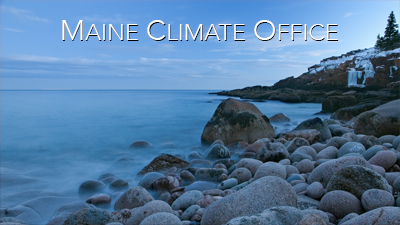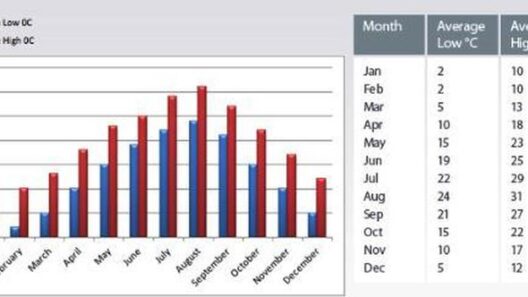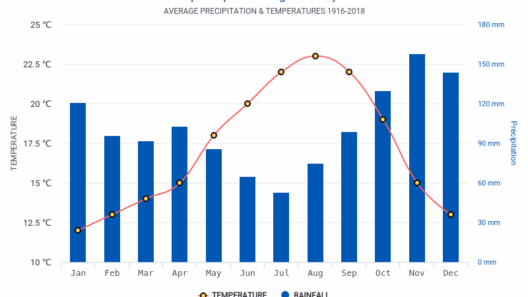Maine, often heralded as the crown jewel of New England, presents a compelling narrative woven through its unique climate and seasonal transitions. As the northeasternmost state in the United States, it is endowed with diverse weather patterns and a distinctive geographical landscape. This convergence of natural elements creates a profound impact on its environment, ecosystems, and the lives of those who inhabit this enchanting region.
The climate of Maine is classified primarily as a humid continental climate. This particular classification denotes significant variations between the temperature extremes of summer and winter. Averaging about 30 inches of precipitation annually, Maine experiences a substantial amount of rainfall, especially in the spring and summer months. As a coastal state, the Atlantic Ocean exerts a moderating influence, contributing to milder winters and cooler summers in coastal areas compared to the interior regions.
Winter in Maine can be characterized by its frosty embrace. Beginning in December and lasting into March, winters are typically harsh, with temperatures often plummeting below freezing. The inland areas, especially in the north, can see accumulations of snow exceeding 100 inches annually. Snow-covered landscapes transform the state into a picturesque winter wonderland, attracting winter sports enthusiasts. Activities such as skiing, snowboarding, and snowshoeing thrive during this season, drawing both locals and tourists alike.
Transitioning from winter to spring, Maine showcases a remarkable metamorphosis. The thawing landscapes and awakening flora signal the arrival of a more temperate climate. Spring, generally spanning March to June, observes a slow but steady warming trend. Early blooms of crocuses and daffodils punctuate the awakening scenery, while the avian population returns, filling the air with melodious chirps. This season is not just a feast for the eyes; it is crucial for Maine’s agriculture, heralding the planting of crops and fostering a landscape ripe for growth and renewal.
As spring surrenders to summer, the climate shifts dramatically, bringing balmy temperatures and longer days. From June to September, Maine revels in its warmest period, with average temperatures ranging from the mid-70s to low 80s Fahrenheit along the coast. The inland regions can be slightly warmer, but the overall climate remains pleasantly temperate compared to many other parts of the United States. The coastline becomes a vibrant hub of activity as residents and tourists flock to its numerous beaches, lakes, and charming seaside towns. The lush verdure and abundant wildlife flourish during these months, creating an idyllic setting for recreational activities, from sailing to hiking.
Eventually, summer wanes, giving way to the breathtaking arrival of autumn. Maine is renowned for its spectacular fall foliage, drawing admirers from across the globe. Between September and November, deciduous trees display a stunning array of colors — vibrant reds, brilliant oranges, and deep yellows create a picturesque panorama that transforms the landscape. The crisp air and gently falling leaves serve as a reminder of the changing seasons. Harvest festivals abound during this time, allowing for the celebration of local produce, including apples, pumpkins, and various root vegetables.
Each season in Maine offers distinct meteorological phenomena that enrich both the natural world and the human experience. For instance, the coastal regions are often blanketed in fog during summer mornings, while inland regions are treated to radiant sunsets reflecting off pristine lakes. This cacophony of sensory experiences illustrates the state’s diverse climatic character and its profound influence on the daily lives of Mainers.
Climate change, however, poses a profound threat to this delicate equilibrium. Rising temperatures, altered precipitation patterns, and more frequent extreme weather events are beginning to manifest across the globe, including in Maine. The customary snow seasons are showing signs of variability, with decreased snowfall in certain years leading to concerns for winter sports and ecosystems that rely on consistent snow cover. Similarly, warmer summers increase the likelihood of droughts, potentially affecting agriculture and water supply in the region.
Furthermore, Maine’s coastal regions are not immune to the encroaching tides of climate change. Rising sea levels threaten coastal habitats, leading to erosion and loss of biodiversity. These changes amplify the risks associated with storm surges, which have become increasingly volatile and destructive. It is crucial for local communities to recognize the importance of sustainable environmental practices, fostering resilience against shifting climate patterns.
In conclusion, Maine’s climate embodies an exquisite interplay between natural beauty and seasonal transitions. From the frosty allure of winter to the vibrant hues of autumn, each season imparts its own charm and significance. The geographical diversity and ecological richness of the state not only contribute to its scenic allure but also underscore the urgency of addressing climate change. As stewards of this remarkable environment, it is imperative for individuals and communities alike to engage in sustainable practices that will preserve and protect the climate for generations to come. Maine’s future, wrapped in the tapestry of its climate, is both an opportunity and a challenge — one that requires collective awareness and action.








